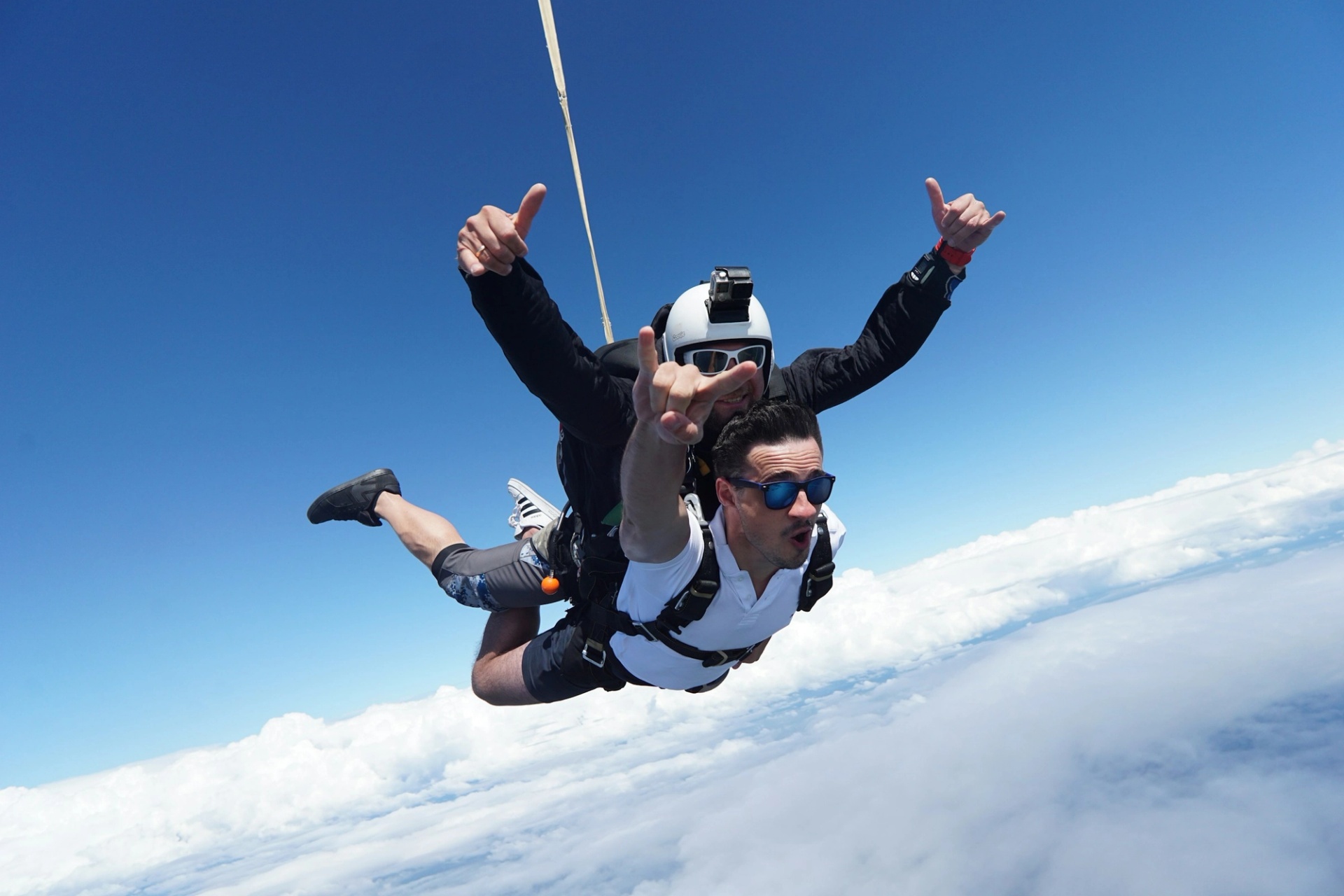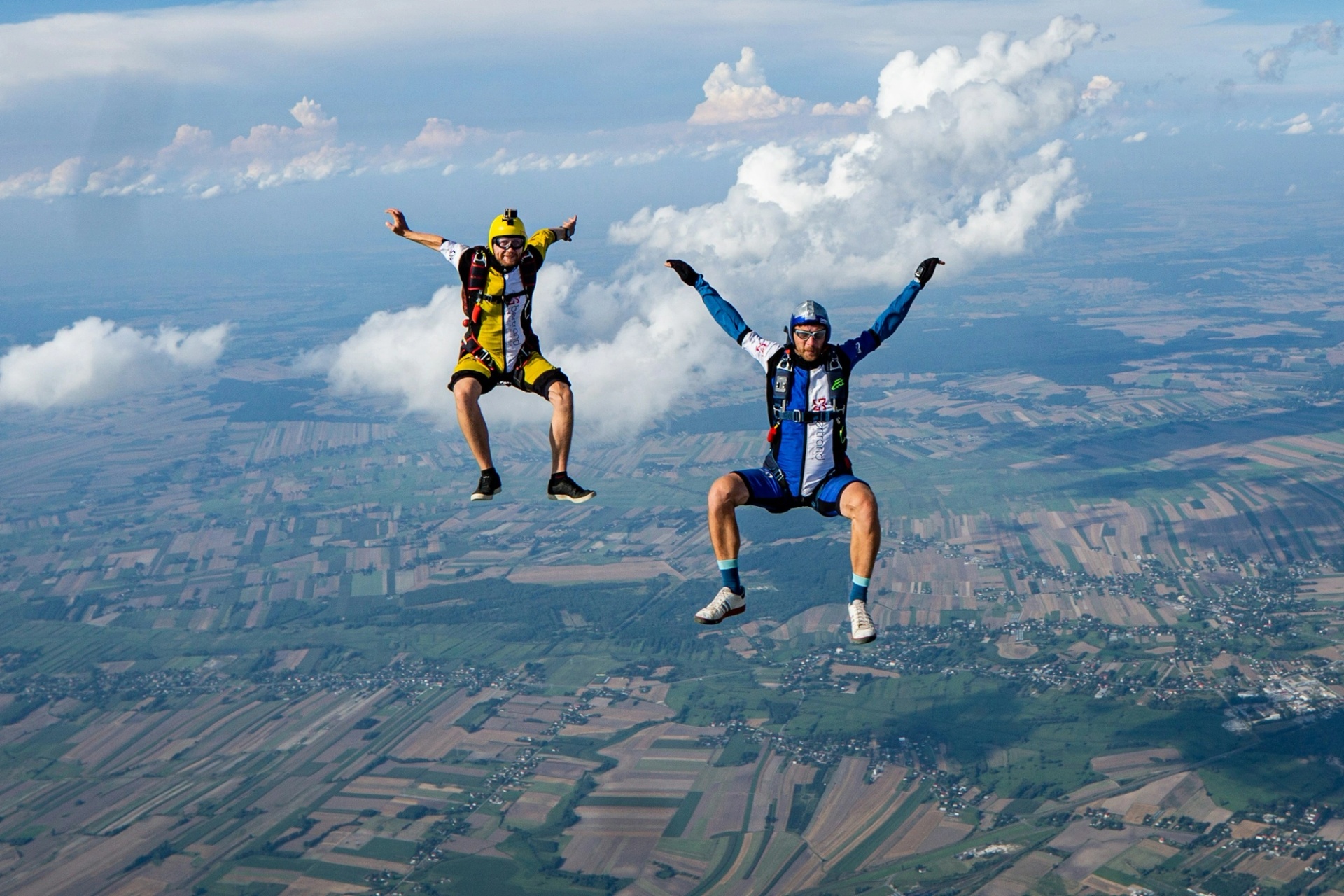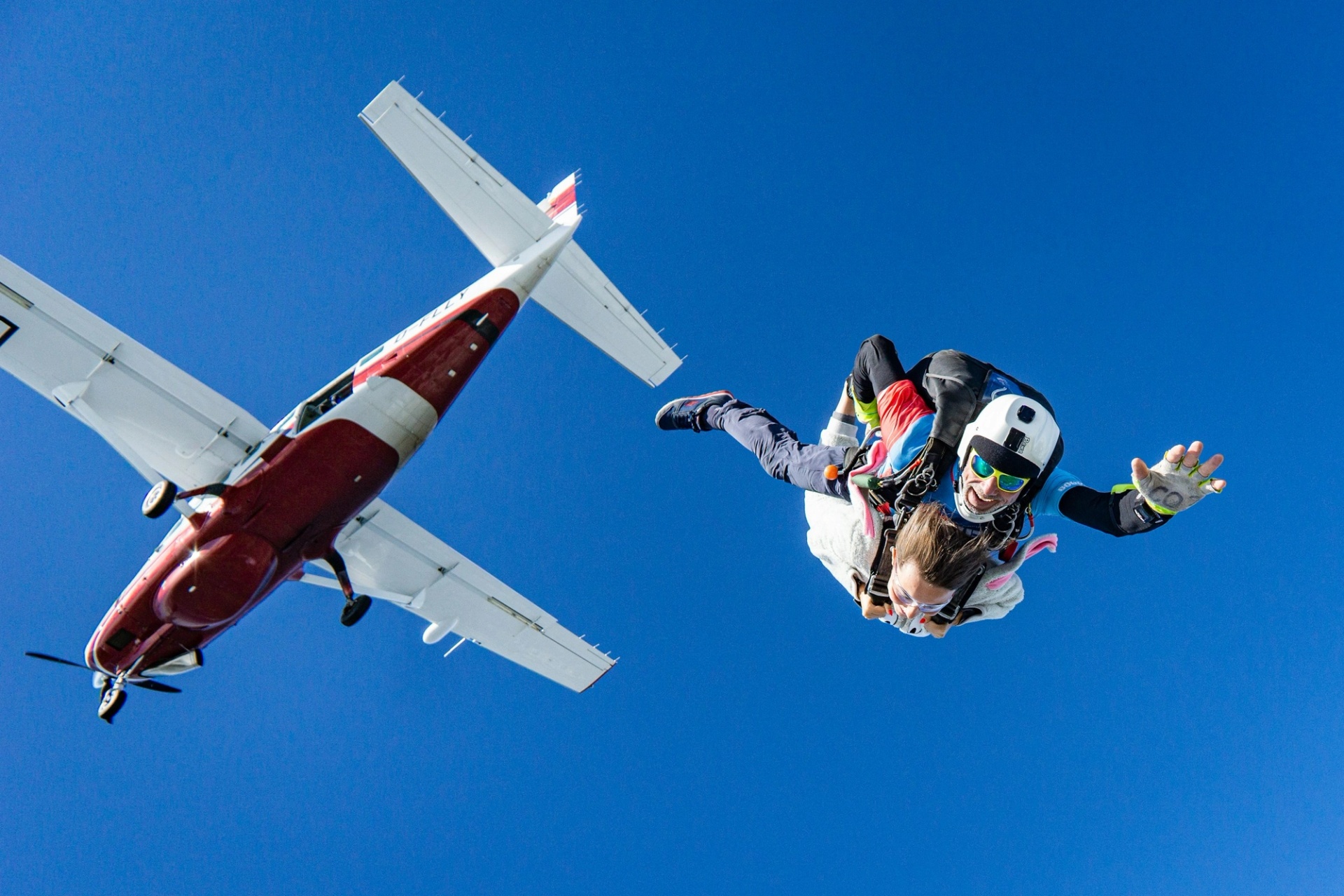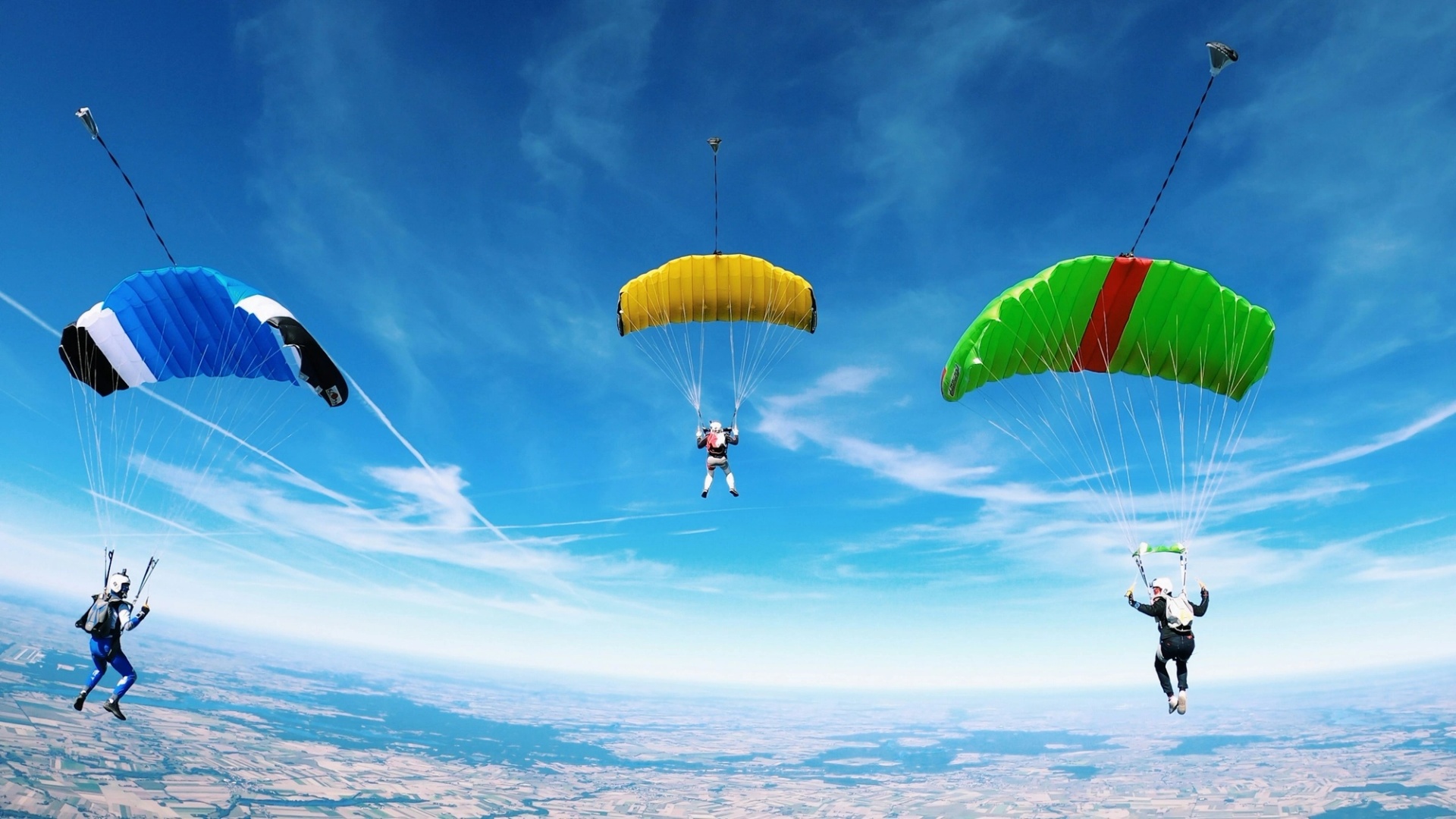
Skydiving transforms the natural human fear of falling into an opportunity for personal growth and extraordinary experience. From your first tandem jump to solo certification, this transformative sport creates a remarkable connection with the sky while building mental resilience, body awareness, and a profound appreciation for the present moment. Whether seeking a one-time adventure or a progression into competitive disciplines, skydiving welcomes thrill-seekers and methodical learners alike with its blend of controlled risk and incomparable freedom.
Learning Journey
Day 1: Ground school and first tandem or static line jump
Days 2-7: Completing initial training program (AFF or static line progression)
Jumps 1-7: Developing stability, altitude awareness, and basic maneuvers
Jumps 8-25: Refining skills toward A-license requirements
Jumps 25+: Earning A-license and beginning specialized disciplines
Most students complete initial certification within 7-10 days of concentrated training (weather permitting).
Essential Gear
Container/Harness System (Houses main and reserve parachutes)
Main Parachute (Sized appropriately for weight and experience)
Reserve Parachute (Emergency system, regularly inspected)
Automatic Activation Device (Emergency computer)
Altimeter (Wrist or audible for altitude awareness)
Helmet (Open or full-face designs)
Jumpsuit (For body position control)
Goggles (Eye protection)
Gloves (Optional for comfort)
Logbook (Recording jump details and progression)

Best Locations
Ideal beginner skydiving centers feature:
Professional instruction with current certification
Strong safety record and culture
Aircraft appropriate for skydiving operations
Large, obstacle-free landing areas
Favorable local weather patterns
Good facilities for ground training
Supportive community atmosphere
Equipment rental or sales options

